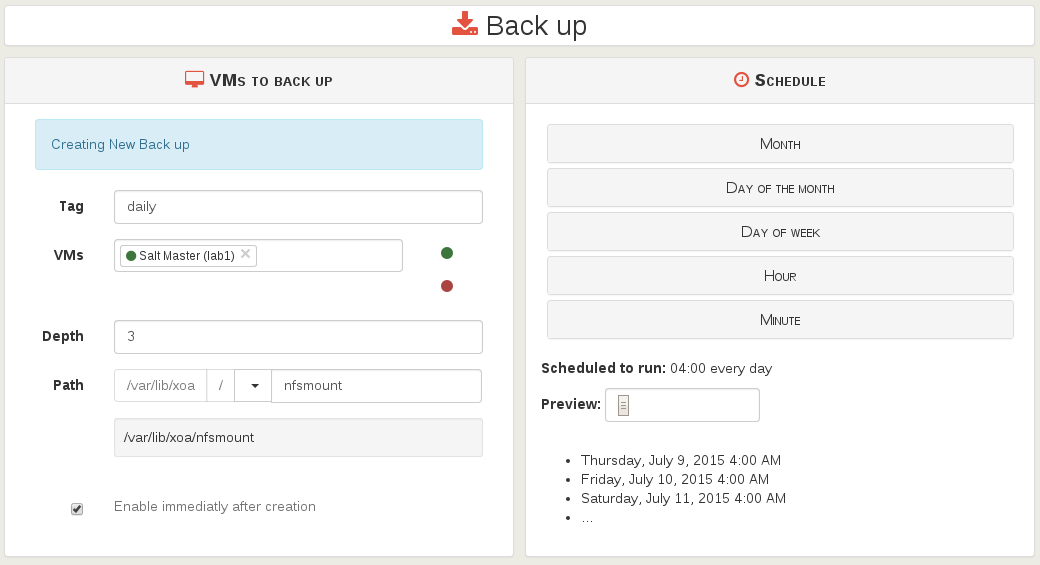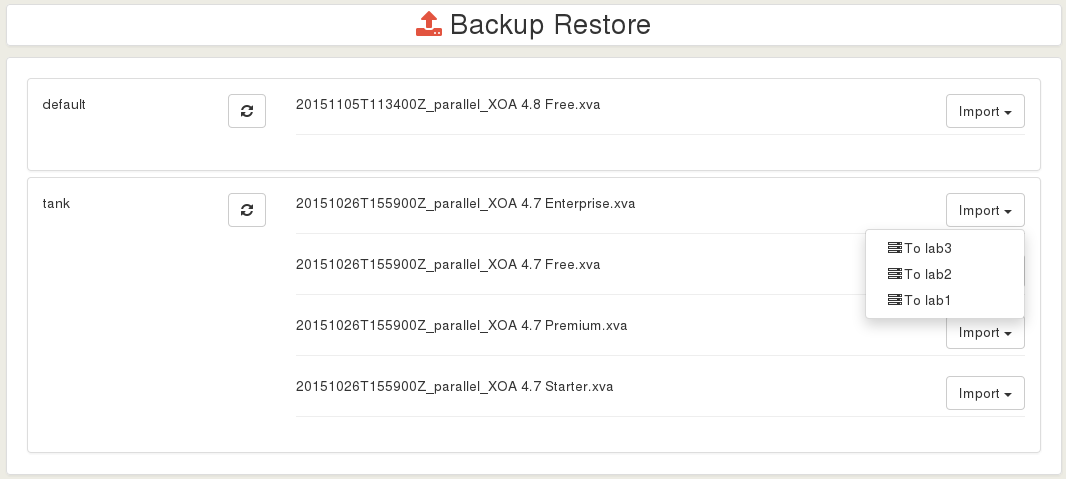3.4 KiB
Backups
This section is dedicated to any existing means to rollback or backup your VMs in Xen Orchestra.
Overview
This is the welcome panel on the backup view. It recaps all existing scheduled jobs. This is also where the backup logs are displayed.
Full backups
You can schedule full backups of your VMs, by exporting them in the local XOA file-system, or directly in a NFS share. "Depth" parameter allow to modify the retention (removing the oldest one).
Full backups are space consuming! But they allow a very simple restoration without anything to think of (the file will contain all the VM disks and information).
Remote stores
This where you can create your stores, places where your backups will be exported.
Supported stores:
- local stores (any folder in XOA filesystem)
- NFS stores
Other stores
We'll support CIFS stores soon. Until then, if you need to mount an unsupported store, you could always do it manually:
- mount your store inside XOA manually, e.g in
/media/myCIFSstore - in the web interface, select a "local" store and point it to your
/media/myCIFSstorefolder.
Any Debian Linux mount point could be supported this way, until we add further options directly in the web interface.
Restore backups
All your scheduled backup are acccessible in the "Restore" view in backup section of Xen Orchestra.
- Select your mountpoint
- Choose the file you want to restore
- Select the host/pool you want to restore it
About backup compression
By default, Backup are compressed (using GZIP, done in XenServer side). There is no absolute rule about using compression or not, but there is some rules.
Gzip compression is:
- slow
- space efficient
- consume less bandwidth (if your NFS share is far)
If you have compression on your NFS share (or destination file-system like ZFS), you can disable compression in Xen Orchestra.
Here is a network usage graph with 2 identical backup, the first one without compression:
Scheduled snapshots
This feature is close to Backups, but it creates a snapshot when planned to do so. It also handles the retention (to remove the oldest snapshot). This feature is very convenient to rollback to a previous state.
Warning: snapshots are not backups. All snapshots are on the same Storage than their original disk. If you lose the original VDI (or the SR), you'll lose all your snapshots.
Advice: due to space usage, rolling snapshots should be avoided for large VMs on non-thin provisioned storages.
Logs
All the scheduled operations (backup, snapshots and even DR) are displayed in the main backup view.
A successful backup task will be displayed in green, a faulty one in red. You can click on the arrow to see each entry detail:
You also have a filter to search anything related to these logs.





